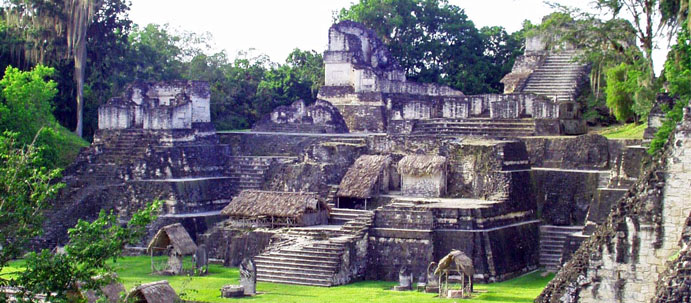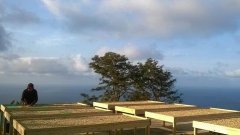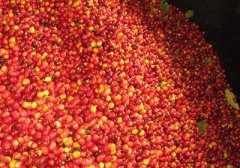Is the coffee famous in Honduras? quality and price of coffee in Honduras

For professional baristas, please follow the coffee workshop (Wechat official account cafe_style)
Honduras Honduras
Honduras is located in Central America, Guatemala in the west, El Salvador in the southwest, Nicaragua in the southeast, the Caribbean Sea in the east and north, and the Gulf of Honseca in the Pacific Ocean to the south.
There are 280000 hectares of coffee plantations in the country, dominated by small coffee merchants, most of which are less than 3.5ha, accounting for 60 per cent of the country's production. In the coffee garden, men and women collect coffee beans by hand, then carefully handle and process them to meet the needs of the market and meet the different tastes of consumers.
In recent years, due to the upgrading of equipment and the assistance of international organizations to raise the level of the coffee industry, Honduras has also emerged on the international coffee stage.
Honduran coffee is of first-class quality and its price is the most competitive in Central American countries. Small, round, slightly bluish green coffee, taste full and slightly sweet, suitable for comprehensive coffee, can also be made into single coffee, suitable for medium and deep roasting!
The land area is 112090 square kilometers.
The capital Tegucigalpa
Time zone UTC-6
The total population is estimated at 8598561 in 2014.
Spanish, the official language
Major religions, Catholicism.
Unit of currency Lompilla Lempira, 1 HNL ≈ 5 TWD
Geography
It is located in the heart of Central America, bordering El Salvador, Nicaragua and Guatemala.
Located between the Pacific Ocean and the Caribbean, Honduras is mainly mountainous, with lava plains inland and narrow plains along the coast.
Climate
Honduras has a tropical climate, with two seasons of dry rain throughout the year, with a rainy season from June to November, with an average annual temperature of more than 20 degrees Celsius, while the northern coastal terrain is low, about 30 degrees Celsius.
Culture
The ethnic mestizo of Honduras, mostly of Hispanic descent and local aborigines, has a brown complexion, but there are still many white or black faces.
Football is the most popular sport in Honduras. The Honduran national football team has reached the World Cup finals three times.
The ancient Mayan city of Copan Copan is recognized as "the Athens of the Mayan world" because of its exclusive preservation of Mayan temples and buildings with the characteristics of Mayan civilization for thousands of years.
diet
Honduras is rich in coffee, so be sure to taste the mellow Honduran coffee.
Rice, beans, corn dumplings (Tamales) and other corn products are local staples and are usually eaten with beef or chicken.
visa
Our people enjoy 90 days visa-free. If you need an extension after arriving in Honduras, you can apply to the Honduran Immigration Service with your passport.
Other information
Food
Rice, beans, corn dumplings (Tamales) and other corn products are local staples and are usually eaten with beef or chicken. Drinking unboiled water directly is not recommended. Most hotels provide filtered water, and shops can also buy mineral water. General stores are open from 9: 00 a.m. to 6: 00 p.m., Monday-Friday. There is a habit of tipping after food consumption in Honduras, and most restaurants take the initiative to add 10% to the bill.
Clothing
Honduras has a tropical climate, with two seasons of dry rain throughout the year. The rainy season is from June to November. Because of the elevation of about 1000 meters, the average annual temperature in Honduras is 20 degrees Celsius. The coastal topography of the northern Shantou city of Honduras is low, about 30 degrees. It is recommended to bring summer clothes and light coats to spare.
Live
Honduras offers a wide variety of accommodation, including high-end hotel chains, resort cabins, general hotels and youth hostels, and most of the more advanced hotels are in the big cities of Honduras.
OK
The domestic bus frequency is intensive and there are many destinations. The types of buses range from advanced air-conditioned cars to general basic buses. The first bus usually leaves in the early morning, the evening bus leaves in the evening, and there are almost no night buses. La Seba has daily ferries to Rhodan and Utila. Water taxis can also be found near the Gulf Islands. All big cities have taxis, as well as car rental services and short-haul minibuses. Basically, transportation in Honduras won't cost much.
Yue Le
Honduras has a variety of tourism methods, including ecological parks, surfing and diving, monuments of civilization and colonial-era old cities. The most famous scenic spot is the Copamaya site, which is listed as an important cultural heritage by the United Nations, and the coast of the Gulf Islands north of Honduras has a beautiful coral area comparable to Australia's Great Barrier Reef, providing tourists with diving, windsurfing and other marine activities.
Important Notice :
前街咖啡 FrontStreet Coffee has moved to new addredd:
FrontStreet Coffee Address: 315,Donghua East Road,GuangZhou
Tel:020 38364473
- Prev

Talk about the main coffee producing areas in Honduras, the current situation of coffee and the ways to improve it.
Professional baristas please follow the coffee workshop (Wechat official account cafe_style) Honduras (Honduras) well-known representative coffee: Honduran coffee seems strange to many coffee drinkers. For coffee production, the geographical conditions of Honduras are no less than those of its neighboring coffee-producing countries such as Guatemala and Nicaragua. But first.
- Next

In 2017, Honduras officially became the largest coffee producer in Central America.
Professional baristas follow the Coffee Workshop (official Wechat account cafe_style) Coffee International (OIC) said that it is estimated that Honduras is already the largest coffee producer in Central America, with Honduran coffee production reaching 7.2 million piculs in the 2016-2017 harvest year, an increase of 6.6 percent over the previous harvest year. The OIC report shows that the current harvest year, which begins on October 1st,
Related
- Does Rose Summer choose Blue, Green or Red? Detailed explanation of Rose Summer Coffee plots and Classification in Panamanian Jade Manor
- What is the difference between the origin, producing area, processing plant, cooperative and manor of coffee beans?
- How fine does the espresso powder fit? how to grind the espresso?
- Sca coffee roasting degree color card coffee roasting degree 8 roasting color values what do you mean?
- The practice of lattes: how to make lattes at home
- Introduction to Indonesian Fine Coffee beans-- Java Coffee producing area of Indonesian Arabica Coffee
- How much will the flavor of light and medium roasted rose summer be expressed? What baking level is rose summer suitable for?
- Introduction to the characteristics of washing, sun-drying or wet-planing coffee commonly used in Mantenin, Indonesia
- Price characteristics of Arabica Coffee Bean Starbucks introduction to Manning Coffee Bean Taste producing area Variety Manor
- What is the authentic Yega flavor? What are the flavor characteristics of the really excellent Yejasuffi coffee beans?

